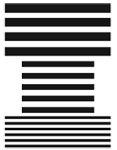Information architecture (IA) involves the structuring of information in websites and intranet sites. This is usually done by grouping the information into categories that are useful for browsing, developing these categories into menus, and providing clear nomenclature for the navigation menus. This combination of organising, labelling and navigating within a website uses traditional indexing skills in a new way.
Indexers are familiar with organising information, grouping and classifying data, developing hierarchies that can be used for navigation, using language and words precisely in order to clearly and succinctly describe concepts, and ensuring that users can find information quickly and easily. Indexers are able to develop information architectures for websites, and to assist IA developers in ensuring that their information architectures work in conjunction with search engines and thesaurus-controlled vocabularies to provide the most enriching web searching experience for users.
Reading list
- The Digital Publications Indexing SIG of the American Society for Indexing focuses on book-type indexes in various digital formats including embedded-tag indexing, indexes for ebooks, and indexes mounted on the web
- Website indexing: enhancing access to information within websites, Glenda Browne and Jon Jermey, 2nd edition, Adelaide: Auslib Press, 2004
- ‘Website indexing’, Mary Coe, The Indexer, vol. 34, no. 1 March 2016, pp. 20–25
- ‘Web indexes and other navigation aids: finding information on web sites’, Fred Brown, in Index it right! Advice from the experts, volume 1, edited by Enid L. Zafran, Wheat Ridge, CO: American Society of Indexers, 2005, pp. 121–146
- Indexing specialties: web sites, Heather Hedden, Wheat Ridge, CO: American Society of Indexers, 2007
- ‘ANZSI Conference: ”Birds of a feather” session: Database and web indexing’, Prue Deacon and Kathy Simpson, ANZSI Newsletter, 2007, vol. 3, no. 5, pg. 4
- ‘A study on the feasibility of subject authority control of web-based Persian medical databases: an Iranian experience’, Saeed Rezaei Sharifabadi, in: Mary Russell (ed), The Indexing life: proceedings from the Australian and New Zealand Society of Indexers conference, 15–17 March 2007, Melbourne. Melbourne: Australian and New Zealand Society of Indexers, 2007, pp. 88–99
- ‘Metadata for Australian Indigenous collections’, Dianna McClellen, in: Karen Gillen (ed) Indexing: engage, enlighten, enrich: proceedings from the Australian and New Zealand Society of Indexers Conference, 17–19 March 2005, Melbourne. Melbourne: Australian and New Zealand Society of Indexers, 2005, pp. 86–104
- ‘HTML/Prep: transforming indexes for the web’, Glenda Browne, AusSI Newsletter, 2003, vol. 27, no. 3, pp. 28–29, 33
- Website indexing: visitors to content in two clicks, James A. Lamb, Ardleigh, England: James A. Lamb, 2006
- ‘Web indexing: extending the functionality of HTML Indexer’, Mike Unwalla, The Indexer, 2006, vol. 25, no. 2 revised
- Indexing the web, American Society of Indexers
- ‘Changes in website indexing’, Glenda Browne, IWP — Information Wissenschaft & Praxis, 2007. no. 8, pp. 437–440
Metadata
- Dublin Core Metadata Initiative
- AGLS Metadata Standard – the AGLS Metadata Standard was originally developed in 1997 to improve the visibility, availability and interoperability of online information. National Archives of Australia has decommissioned the AGLS website and uncoupled their responsibilities from AS 5044-2010. AGLS is published as Australian Standard AS 5044-2010
- Metadata, 3rd ed., by Marcia Lei Zeng and Jian Qin. Lond, Facet Publishing, 2022
- Metadata demystified: a guide for publishers, Amy Brand, Frank Daly, Barbara Meyers, NISO Press and The Sheridan Press, 2003
- Understanding metadata: what is metadata, and what is it for?: A primer. NISO Press, 2017
